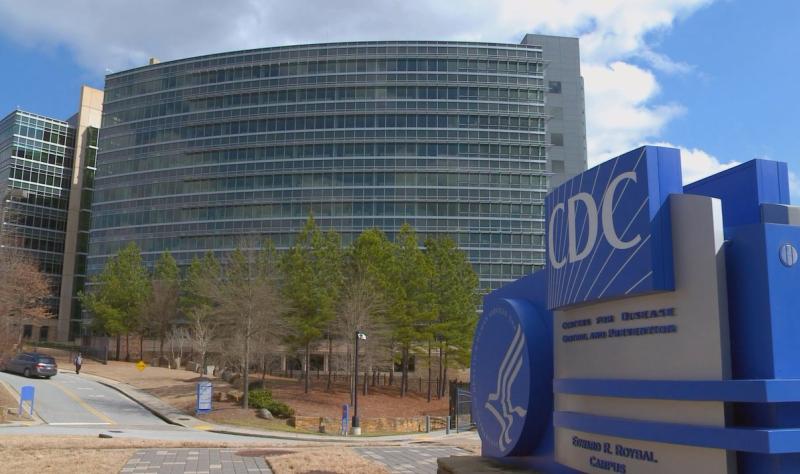Sure Signs You’ve Had COVID Already, According to Experts

COVID-19, and its many subvariants, have been with us for several years now—so chances are you’ve had the virus, even if you’ve never tested positive for it. But what about when COVID symptoms don’t go away but stay for months, or even years? This is known as long COVID, a condition which doctors are only just getting to grips with—including doctors who are experiencing long COVID firsthand.
“One in 5. It almost seems unimaginable that this is the real number of people who are struggling with long COVID, especially considering how many people in the US have had COVID-19 at this point (more than 96 million),” says Monica Verduzco Gutierrez, MD. “Yet I continue to hear of people who are struggling, and we continue to see a flood of people in the long COVID clinic. It isn’t over, and long COVID is the new pandemic. Even more unimaginable at this time is that it’s happening to me. I’ve experienced not only the disabling effects of long COVID, but I’ve also seen, firsthand, the frustration of navigating diagnosis and treatment. It’s given me a taste of what millions of other patients are going through.”
“It has been really incredible to see all these post-COVID clinics open up everywhere,” says Justin Trivax, MD, an interventional cardiologist who works with long-COVID patients. “This is really what you need, because not only is this a pulmonary and cardiac disease, but this is probably one of the most multidisciplinary of all diseases I have ever seen… These clinics are really helpful because there are too many physicians who are being pulled in too many different directions and don’t have the time to sit down with a patient who is really struggling.” Here are some sure signs you’ve already had COVID, according to experts. Read on—and to ensure your health and the health of others, don’t miss these Sure Signs You’ve Already Had COVID.
1
Brain Fog


One sadly very common symptom of long COVID is debilitating brain fog—the severity of which can interfere with everyday life and work. “People struggling with the effects of long COVID may have noticeable problems with attention, memory, and executive function,” says Tamara Fong, MD, PhD. “Studies report these issues both in people who were not hospitalized with COVID and in those who were, as well as in people who had severe cases. These findings raise some important questions about how COVID-19 infection affects cognition.”
Brain fog doesn’t have to be severe to cause issues. “‘Brain fog’ is just kind of this feeling that you’re trying to do something, and it’s taking more effort. It’s harder to do. You don’t feel like you’re picking up all of those details — almost as if you’re driving through a fog,” says Billie Schultz, MD, a Mayo Clinic physical medicine and rehabilitation expert. According to Dr. Schultz, some rehabilitation strategies can help “retrain” the brain. “Typically, it means going into work with a therapist initially once or twice over the course of a month. And getting homework. ‘I want you to try to utilize these strategies in your day-to-day life.’ Because, ultimately, that’s what decides if they’re working.”
2
Fatigue


Chronic fatigue is one of the most commonly-reported symptoms of long COVID. “Long-term COVID—or post-acute COVID—affects a multitude of organ systems,” said Dr. Sanghavi. “Starting from head to toe, it leaves behind multiple symptoms in a large proportion of patients who have recovered from COVID-19.”
“Clinicians really need to look for this cardinal sign of long COVID as well as evidence of myalgic encephalomyelitis or chronic fatigue syndrome (ME/CFS),” says Dr. Gutierrez. “ME/CFS is marked by exacerbation of fatigue or symptoms after an activity that could previously be done without these aftereffects. In my case, as an All-American Masters miler with several marathons under my belt, running 5 miles is a walk in the park. But now, I pay for those 5 miles for the rest of the day on the couch or with palpitations, dizziness, and fatigue the following day. Busy clinic day full of procedures? I would have to be sitting by the end of it. Bed by 9 PM was not always early enough.”
3
Trouble Breathing


Some patients are reporting long-term issues with breathing, long after other symptoms of COVID have disappeared. “From a lung perspective, patients have persistence of shortness of breath, or dyspnea, and require ongoing oxygen treatment even after discharge and for weeks to months because of permanent damage to the lungs,” says Devang Sanghavi, MD. “As far as the cardiac system is concerned, there’s chest pain and shortness of breath.”
“Recovery from acute COVID infection can be associated with residual organ damage,” says Donna M. Mancini, MD, professor in the department of cardiology at the Icahn School of Medicine at Mount Sinai. “Many of these patients reported shortness of breath, and the cardiopulmonary exercise test is often used to determine its underlying cause. The CPET results demonstrate several abnormalities including reduced exercise capacity, excessive ventilatory response and abnormal breathing patterns which would impact their normal daily life activities.”
4
Heart Palpitations


Heart palpitations could be an ongoing symptom of long COVID, experts say. “It’s not uncommon for patients who recover from the acute phase of COVID-19 to have continued respiratory symptoms, such as shortness of breath, chest pain and coughing,” says UH pulmonologist David Rosenberg, MD, MPH. “These symptoms may last weeks or months. But if they become worse, you may be developing a complication of COVID-19. The inflammation from COVID-19 can cause pneumonia throughout the lungs, even during the recovery phase. The blood can be sticky because of the inflammation, and you can develop blood clots. Also, the inflammation from COVID can irritate asthma. Because the heart and lungs are integrated, some COVID-19 patients with ongoing breathing problems are diagnosed with a heart problem.
“As a cardiologist, the main unanswered question I wrestle with is how much of COVID is a function of residual infection which has not been cleared, versus long-term target organ damage,” says Aaron Baggish, MD, director of the cardiovascular performance program, Mass General Hospital. “So, if the heart or lung vessels were damaged during COVID, or the symptoms people feel reflect that damage, is there still virus in the body? Palpitations are a very common component of long-COVID. When we do ambulatory rhythm monitoring on these patients we see, for the most part, benign atrial or ventricular atopic beats, so not things that would confer risk, but certainly something that patients can and do feel.”
5
Insomnia


Long term sleep issues after getting COVID-19 is another common symptom of long COVID. “At least 40% of patients with long COVID reported moderate to severe sleep disturbances, and Black race was a leading factor associated with sleep disturbances in this population,” says Cinthya Pena Orbea, MD, a staff physician in Cleveland Clinic’s Sleep Disorders Center. “Sleep difficulties and fatigue are widely reported among patients with long COVID, but little is known about their severity in this setting and what may predict their development. So we leveraged data from Cleveland Clinic’s reCOVer Clinic for people with long COVID to further elucidate these associations.”
Insomnia could be linked both to the stress of getting the virus, as well as a direct result of the virus itself. “Sleep disturbances and fatigue are part of the sequelae of COVID,” says Ruth Benca, MD, PhD, co-chair of the Alliance for Sleep. “We know that people who have had COVID have more trouble sleeping afterwards. There is the COVID insomnia created in all of us just out of our worries, fears, isolation, and stress. And then there’s an actual impact of having the infection itself on worsening sleep.”
6
How to Stay Safe Out There


Follow the public health fundamentals and help end this pandemic, no matter where you live—get vaccinated or boosted ASAP; if you live in an area with low vaccination rates, wear an N95 face mask, don’t travel, social distance, avoid large crowds, don’t go indoors with people you’re not sheltering with (especially in bars), practice good hand hygiene, and to protect your life and the lives of others, don’t visit any of these 35 Places You’re Most Likely to Catch COVID.


